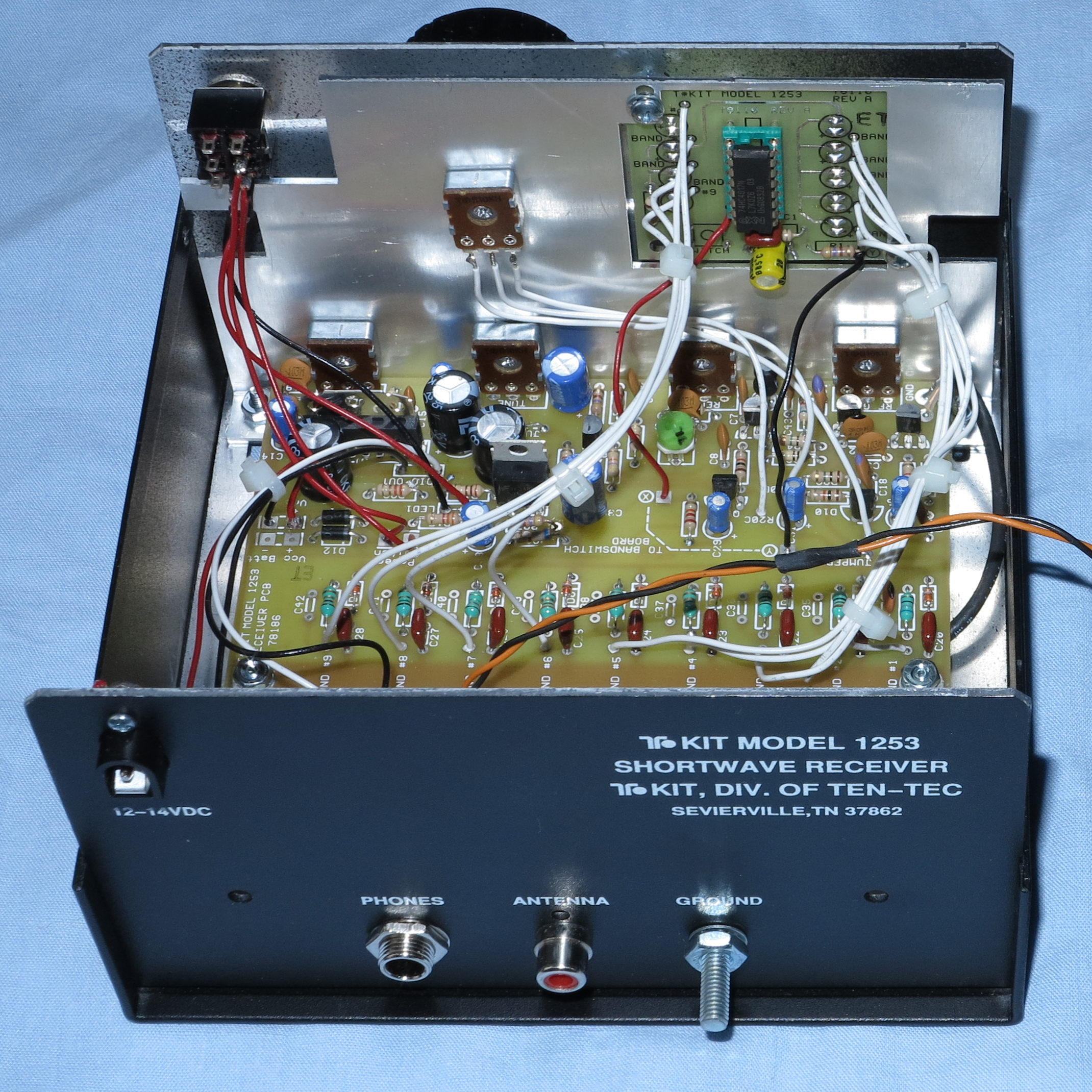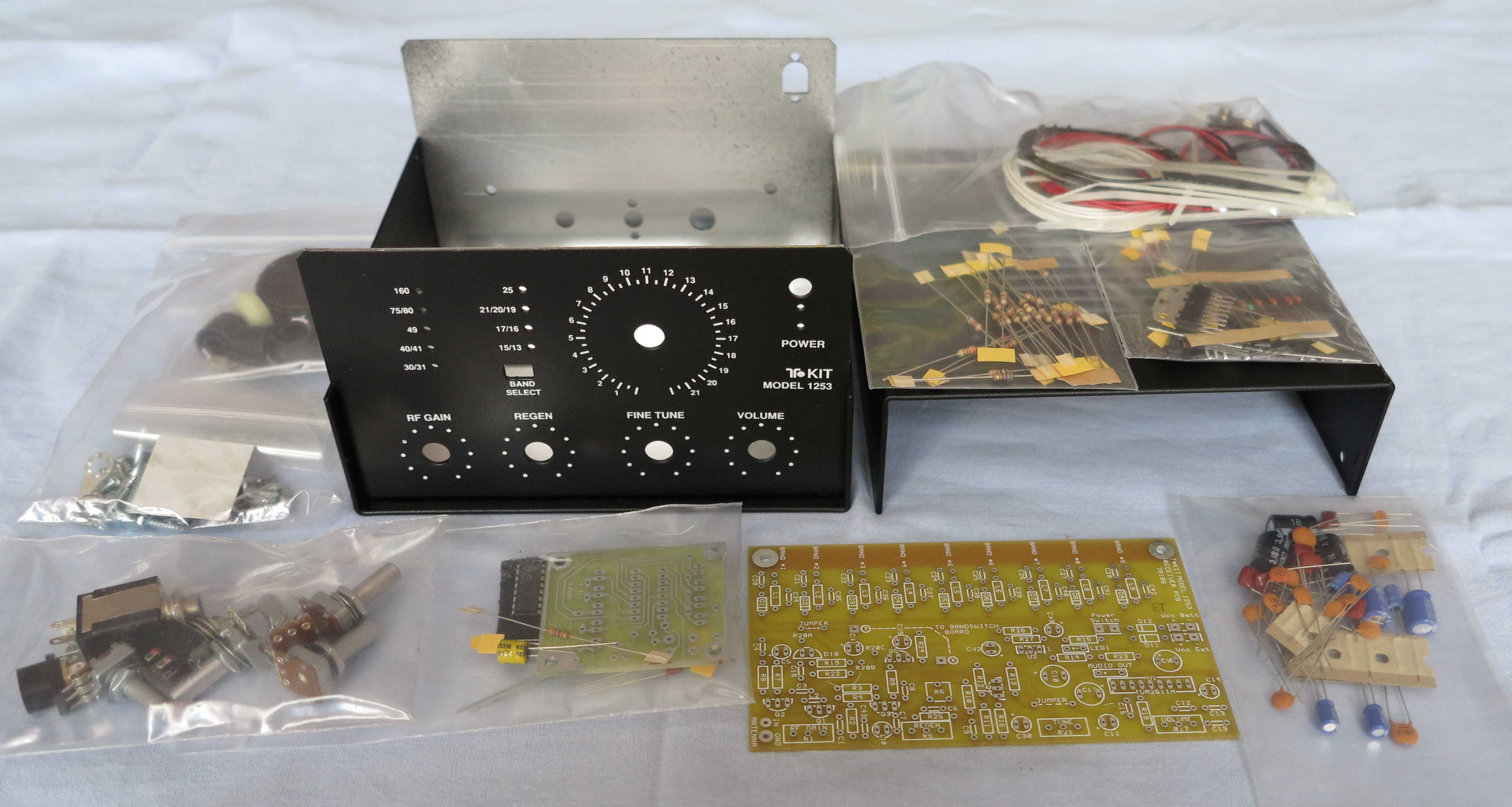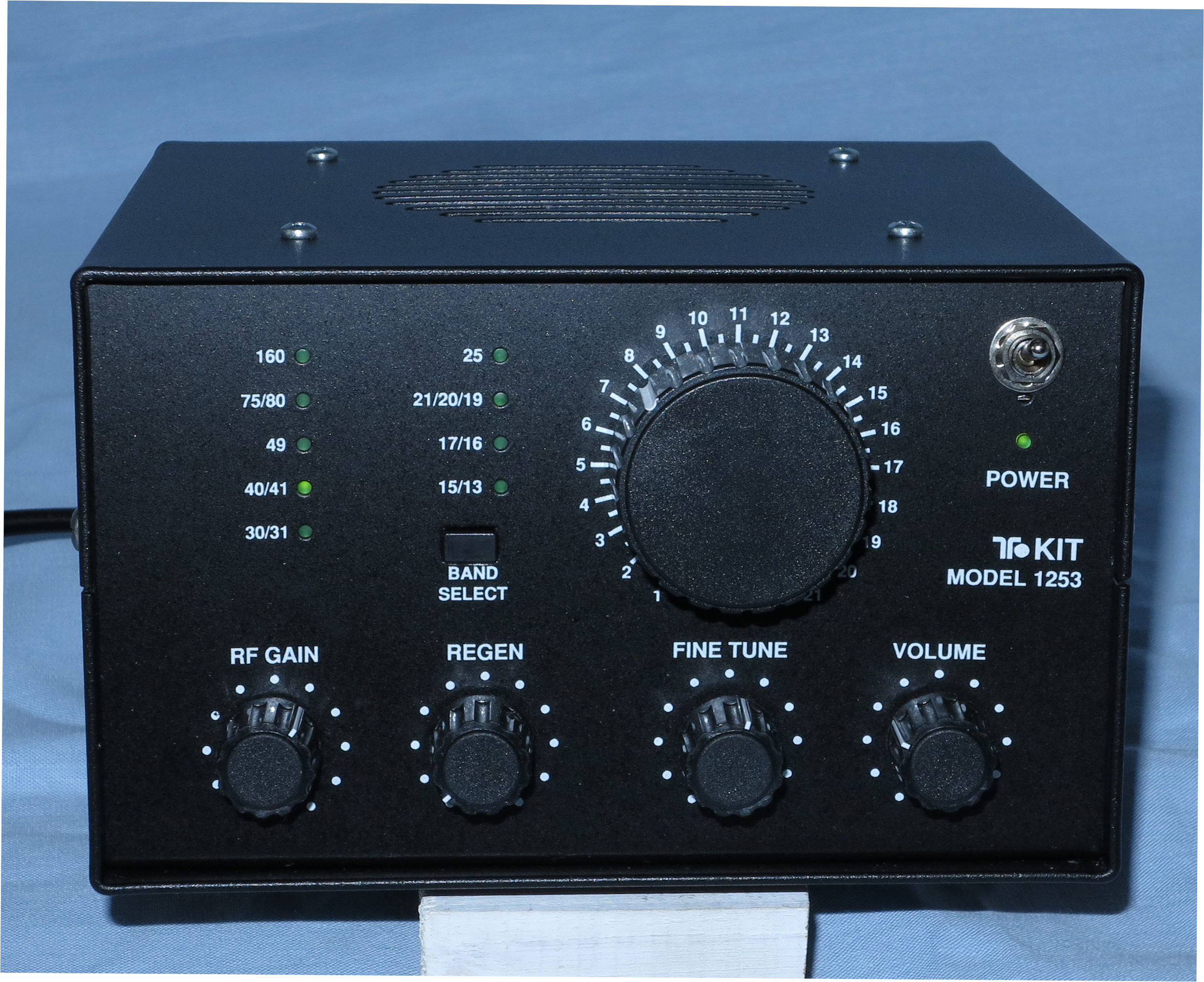The schematic diagram is shown below (thanks Lionel for image processing).

The antenna is connected to a JFET
RF amplifier Q1 followed by a 2 JFET regenerative stage (Q2,Q3): this receiver shows points of similarity to the 1054 in the RF and audio preamplifier sections. The
low-level audio output is amplified by Q4 and a TDA2611A power
amplifier drives the internal loudspeaker or a low impedance headset.
Tuning is accomplished by 2 controls: a large Main Tuning knob
with a circular logging scale and a smaller Fine Tuning, very helpful
when listening to CW or SSB signals.
The 9 shortwave bands are :
1.760 to 1.990 MHz, 3.3 to 4.15 MHz, 5.5 to 6.9 MHz, 6.8 to 8.5 MHz,
8.5 to 11 MHz, 10.1 to 13.2 MHz, 12.5 to 16 MHz, 14.7 to 18.5 MHz and
18.5 to 21.5 MHz. Band switching, accomplished by a decade counter, is
rather uncommon but not so bad.
Soldering
the components on the PCB is not difficult and the Instruction Manual
is a good one, with a simple theory section about regenerative radios.
I suggest you read the errata pages before beginning. Check the
resistors and the inductors carefully before soldering
because one can be confused with some colors: if you are not sure,
check the resistor with an ohmmeter.
As I don't intend to use the internal battery pack, I don't install the battery compartment in my receiver.
The receiver is built
in 7 assembly phases and several optional progress tests are very
helpful (audio amplifiers test, basic receiver operation test, etc.).
Here is a picture of the inside of the 1253 just before final assembly.

And this one shows the complete receiver.
2. Testing the receiver.
I tested the receiver with a
small antenna (6 m of wire going into the attic). Tuning is easy
and the fine-tune control is very useful. I heard a lot of
broadcast stations on several shortwave bands. Many CW and SSB ham
stations were heard on 80 and 40 meters, and on 20 meters when the band
was open.
The measured sensitivity is good : a 2 uV signal, 90% AM
modulated by a 1 kHz signal, is perfectly audible in the loudspeaker. A
1 uV CW signal is easily received .
Conclusion.
This
is a good and fun radio to build and use. I got very good results with
this simple receiver and I especially appreciated the Coarse/Fine
tuning and the 9-Band coverage.
Home




